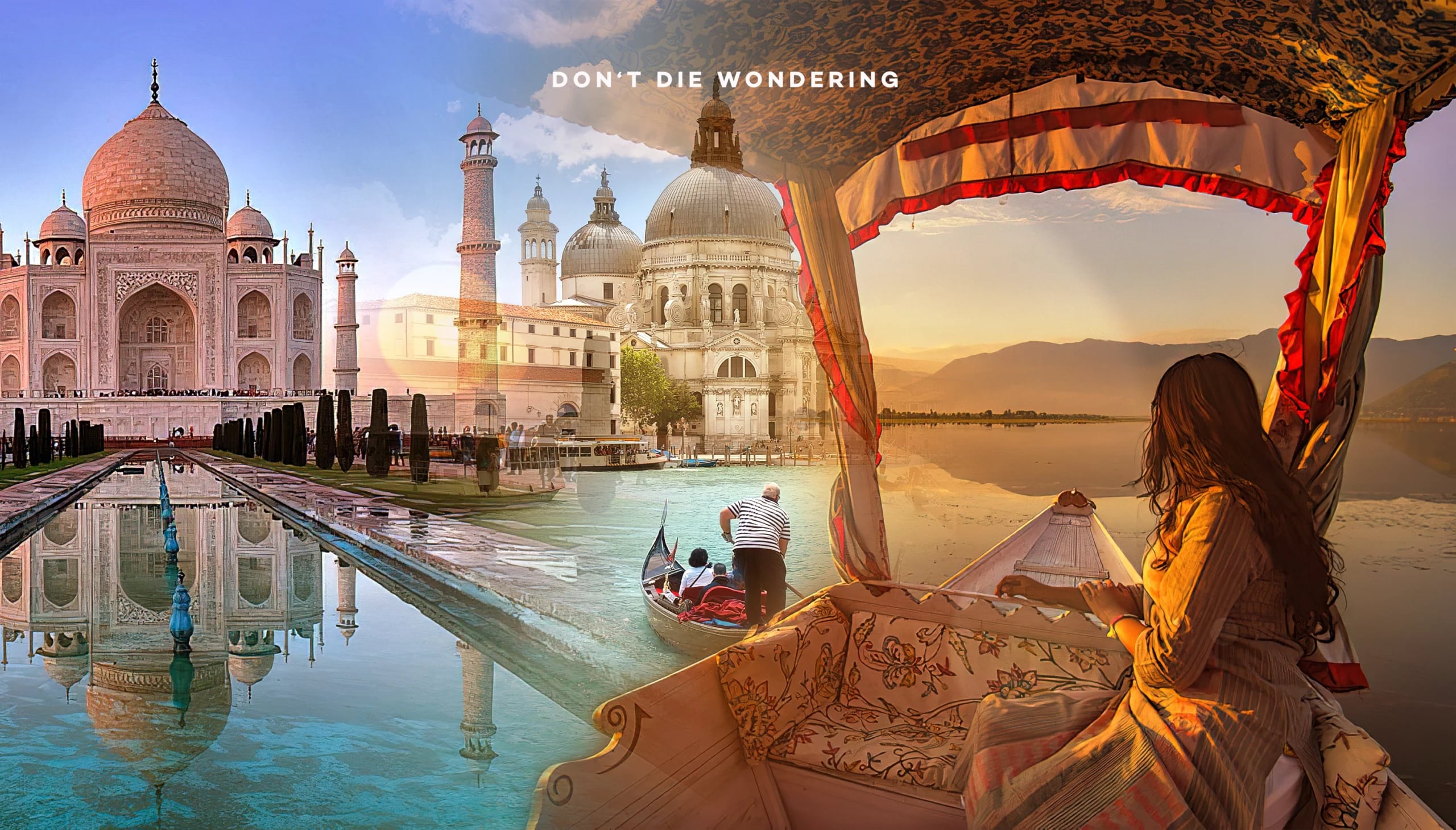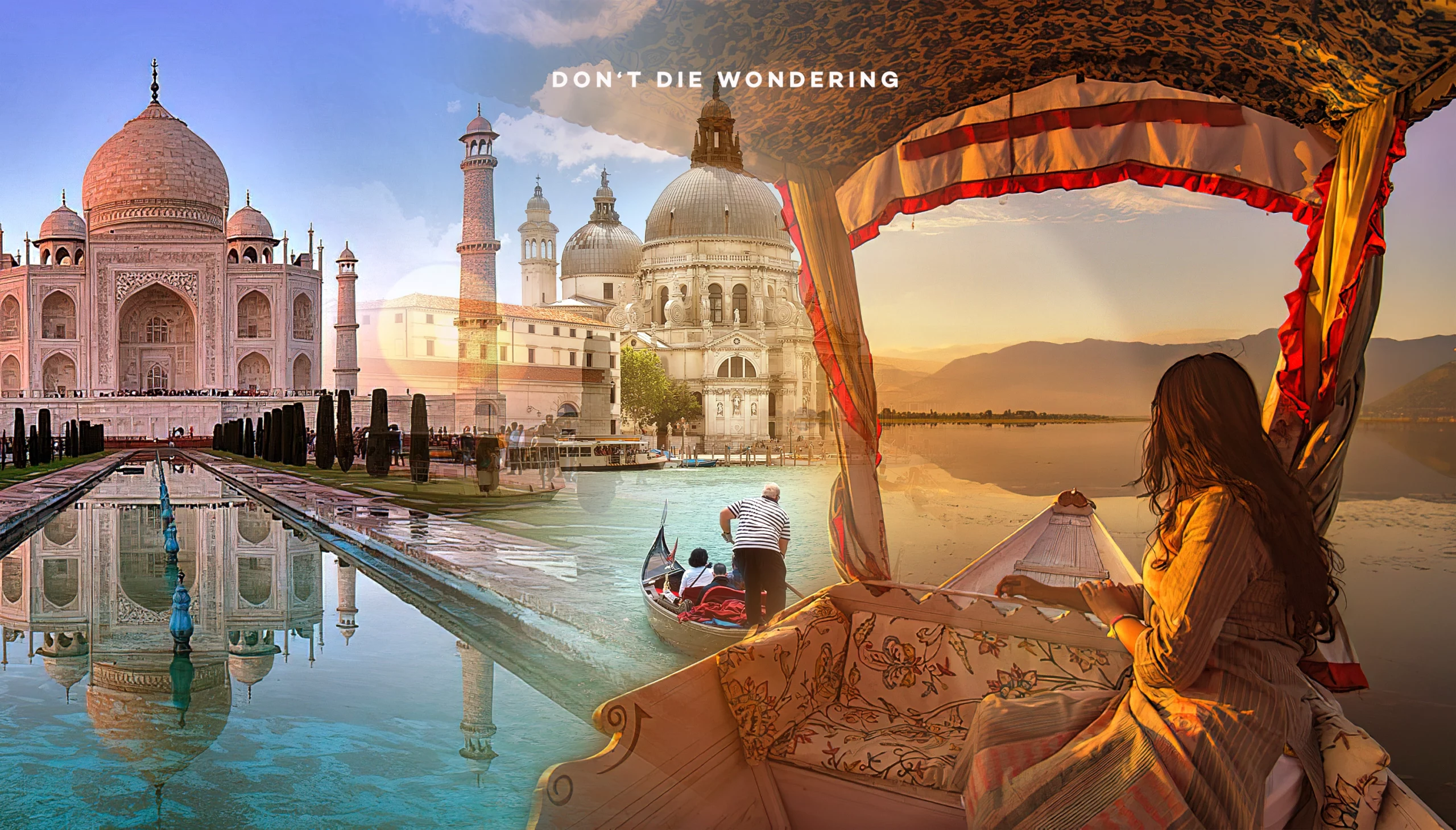Climate change, environmental degradation, mass tourism… there’s plenty of reasons these places in their world might not be around in the next 50 years.
In a world where every Instagram influencer and travel vlogger is racing to discover the next big thing, a chilling truth lurks beneath the filter-perfect selfies: some of our planet’s most beloved destinations are slipping away, vanishing like sand through our fingers. The clock is ticking, and in the next decade, many of these iconic hotspots will be but ghostly memories, mere whispers of their former glory. The culprits? These are destinations at risk from climate change, rising sea levels, environmental degradation, and mass tourism—ruthless adversaries bent on wiping these wonders off our maps.
So, strap in as we embark on a whirlwind tour of ten extraordinary destinations teetering on the brink of oblivion. We’ll delve into their rich cultural heritages, storied histories, and the looming threats that cast shadows over their futures. Each of these places is a poignant reminder of the fragile dance between nature and human ambition—a dance that we must learn to navigate with care if we are to safeguard the world’s most vulnerable treasures for generations to come.
1. The Maldives: A Sinking Paradise

There’s something soul-crushing about knowing that the world’s most idyllic coastline is on nature’s hit list. The Maldives, nestled in the heart of the Indian Ocean, is a picture-perfect collection of over 1,000 coral islands, each a tiny jewel boasting turquoise waters and vibrant marine life. This island nation has long been the ultimate symbol of luxury, drawing honeymooners and divers like moths to a flame. With a history as rich and varied as its marine ecosystems, the Maldives has played host to a medley of cultural influences, from Indian and Arab traders to European explorers.
But let’s not get too misty-eyed, because the Maldives is staring down the barrel of a future where rising sea levels threaten to pull the plug on paradise. Most of these islands sit barely a metre above sea level, and scientists are sounding the alarm that they could be uninhabitable by 2100 if current trends persist. Coastal erosion and increasingly frequent storm surges are the not-so-gentle reminders that this paradise might one day be nothing more than a memory, washed away by the relentless tides. It is one of the many destinations at risk from climate change.
2. Venice, Italy: The Sinking City

Venice, the jewel of the Adriatic, is a city that defies ordinary description. With its maze of canals and stunning Renaissance architecture, Venice has been a beacon of art and culture since the Middle Ages, inspiring everyone from Shakespeare to Turner. It’s a place that makes poets swoon and tourists snap photos until their phones beg for mercy – but seeing as its expiry date looms in the near distance, perhaps taking photographs of its current glory isn’t such a terrible way to preserve the city’s charm.
But hold onto your gondolas, because Venice is doing its best impression of the Titanic, sinking at an alarming rate thanks to a nasty cocktail of subsidence and rising sea levels. The city’s famous acqua alta, or high tides, are no longer just a charming quirk—they’re downright menacing, flooding historic landmarks and putting its UNESCO World Heritage status at risk. Without serious intervention, Venice might end up as the world’s most glamorous underwater museum by the end of the century, a lost city swallowed by the very waters that once defined its magic.
3. Great Barrier Reef, Australia: A Bleaching Crisis

Stretching over 2,300 kilometres off the coast of Queensland, the Great Barrier Reef is the undisputed heavyweight champion of coral reefs. It’s the largest in the world and a UNESCO World Heritage Site, acting as both a dazzling marine metropolis and a critical haven for thousands of species. This vibrant ecosystem doesn’t just boost Australia’s bragging rights—it’s a cornerstone of global biodiversity and ocean health.
But in a cruel twist of fate, the Reef is in the fight of its life as one of the most known destinations at risk from climate change. Rising ocean temperatures and pollution have given us the tragic phenomenon known as coral bleaching, which threatens to turn this vibrant underwater wonderland into a ghostly expanse of dead coral. Without drastic cuts in carbon emissions and robust environmental protections, scientists warn that much of the Reef could be as damaged as your phone after a swim in the ocean within the next few decades. It’s a race against time to save this aquatic treasure before it becomes just another sad tale of “what once was.”
4. Bangkok, Thailand: The Sinking Metropolis

Bangkok, the vibrant capital of Thailand, is known for its bustling streets, ornate temples, and vibrant street markets. As a major economic and cultural hub, it attracts millions of tourists each year, eager to experience its unique blend of tradition and modernity. Bangkok is sinking at a rate of 2-3 centimetres per year due to groundwater extraction and rapid urban development – another destination at risk for climate change. Coupled with rising sea levels, the city faces an increased risk of flooding, with predictions suggesting it could be underwater by 2050 if no action is taken.
5. Tuvalu: An Island Nation in Peril

Tuvalu might be one of the smallest and least visited countries on Earth, but this remote island nation in the Pacific Ocean is packed with a rich Polynesian culture and a smattering of nine coral atolls. Think of it as the ultimate island getaway—minus the tourist hordes, for now. But Tuvalu isn’t just known for its idyllic beaches; it’s also known for being on the front lines of climate change’s wrath.
Rising sea levels and a storm frequency that makes you wonder if Mother Nature has a vendetta against tiny islands are threatening to wash Tuvalu off the map. The low-lying islands are at risk of becoming uninhabitable in the next few decades, turning this island paradise into a cautionary tale. As the waves inch closer, the Tuvaluans might have to pack up and relocate, leaving behind their ancestral lands. It’s a last resort no one wants to think about, but it’s becoming a reality as Tuvalu faces the existential threat of being one of climate change’s first casualties.
6. The Dead Sea: A Shrinking Wonder

The Dead Sea, bordered by Jordan to the east and Israel and Palestine to the west, is the lowest point on Earth, making it one of the prime destinations at risk from climate change. Its mineral-rich waters and therapeutic mud have attracted visitors for millennia, from ancient kings to modern-day tourists. However, the Dead Sea is rapidly shrinking due to water diversion from the Jordan River, its primary tributary. Mineral extraction activities further deplete its waters, with predictions suggesting that the sea could shrink by 30% over the next 50 years if current practices continue.
7. Glacier National Park, USA: Melting Glaciers

Located in Montana, Glacier National Park is a haven for outdoor enthusiasts, boasting over 1,500 square miles of rugged wilderness, pristine lakes, and alpine scenery. It is a critical habitat for diverse wildlife and a popular destination for hikers and nature lovers. Climate change is causing the park’s glaciers to melt at an unprecedented rate, with predictions that they could disappear entirely by 2030. This loss threatens the park’s ecosystems and impacts freshwater supply for surrounding communities.
8. Komodo Island, Indonesia: The Home of Dragons

Komodo Island, part of Indonesia’s Lesser Sunda Islands, is famous for its Komodo dragons, the largest lizards on Earth. The island is a UNESCO World Heritage Site and a popular destination for wildlife enthusiasts and divers. Over-tourism, habitat destruction, and climate change threaten Komodo Island’s unique ecosystems. The Indonesian government has considered closing the island to tourists to protect its vulnerable wildlife and environment.
9. The Everglades, USA: A Vanishing Wetland

The Everglades, a vast subtropical wetland in Florida, is a critical ecosystem supporting diverse wildlife, including alligators, manatees, and numerous bird species. It is a UNESCO World Heritage Site and a vital source of fresh water for the region. Urban development, pollution, and rising sea levels threaten the Everglades’ delicate balance, making it one of the destinations at risk from climate change. Without significant restoration efforts, much of the wetland could be lost within the next few decades, impacting biodiversity and water supply.
10. Madagascar: A Biodiversity Hotspot in Danger

Madagascar, an island nation off the southeast coast of Africa, is renowned for its unique wildlife, including lemurs, chameleons, and baobab trees. Over 90% of its species are found nowhere else on Earth, making it a critical biodiversity hotspot. Deforestation, habitat loss, and climate change threaten Madagascar’s unique ecosystems. If current trends continue, many species could face extinction within the next few decades, leading to a significant loss of biodiversity.
Reflections
As we take a moment to chew over the plight of these vanishing paradises, it’s clear that the forces driving their decline are as tangled as a bad hair day. The academic world is waving its arms frantically, calling for a collective wake-up call. Recent dissertations scream for a united front—government, communities, and individuals alike—if we’re to stand a chance at staving off the doom looming over these precious locales.
The clock is ticking, and it’s high time we get our act together. We’re the stewards of this planet, and it’s our job to defend these disappearing jewels against the relentless tide of climate change and environmental degradation. If we’re serious about preserving these wonders, we need to embrace a smorgasbord of innovative solutions and sustainable practices. Only by rolling up our sleeves and working hand in hand can we hope to safeguard these fragile beauties for the generations who will one day marvel at them.
So let’s not just talk the talk. It’s time to walk the walk and ensure these iconic destinations don’t become mere footnotes in a history book. By shining a spotlight on their precarious state, we can ignite a wave of awareness and action, keeping their stories—and their splendor—alive for all who come after us.


